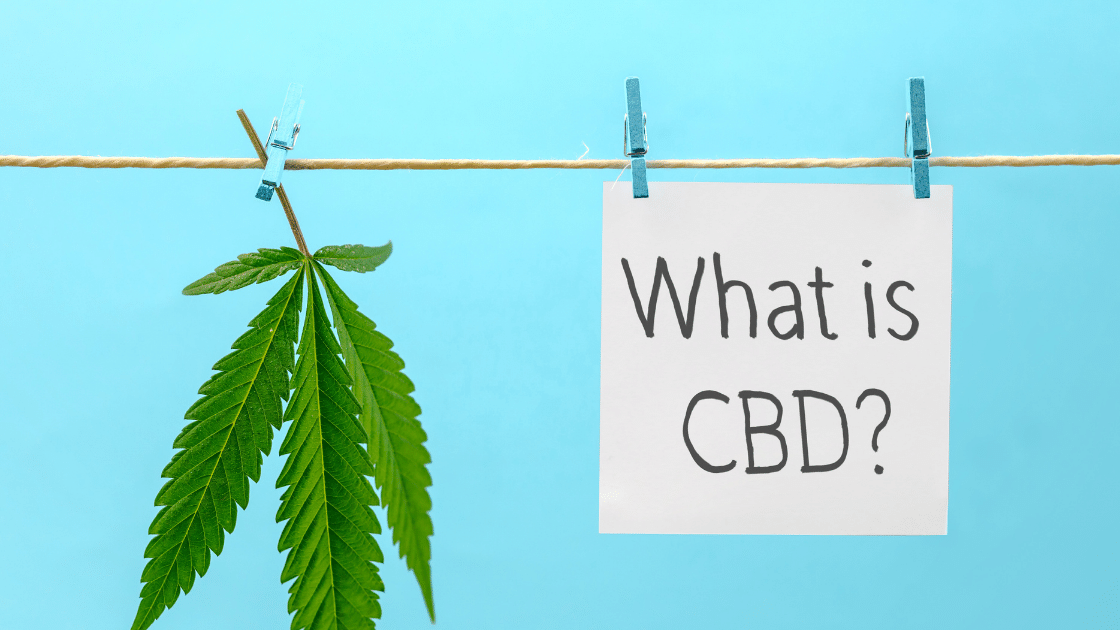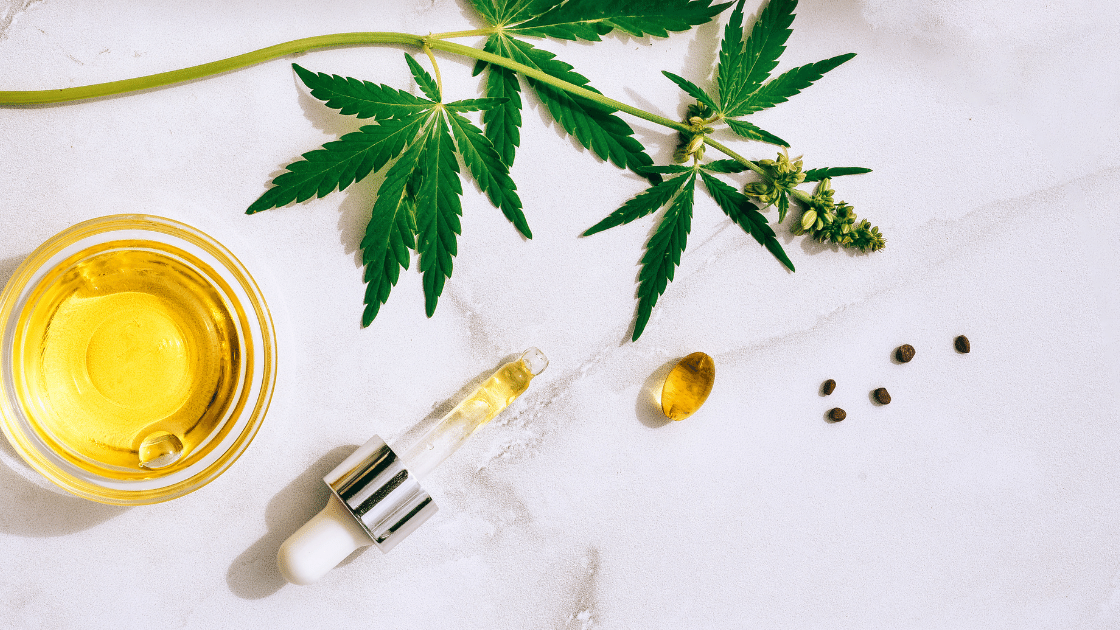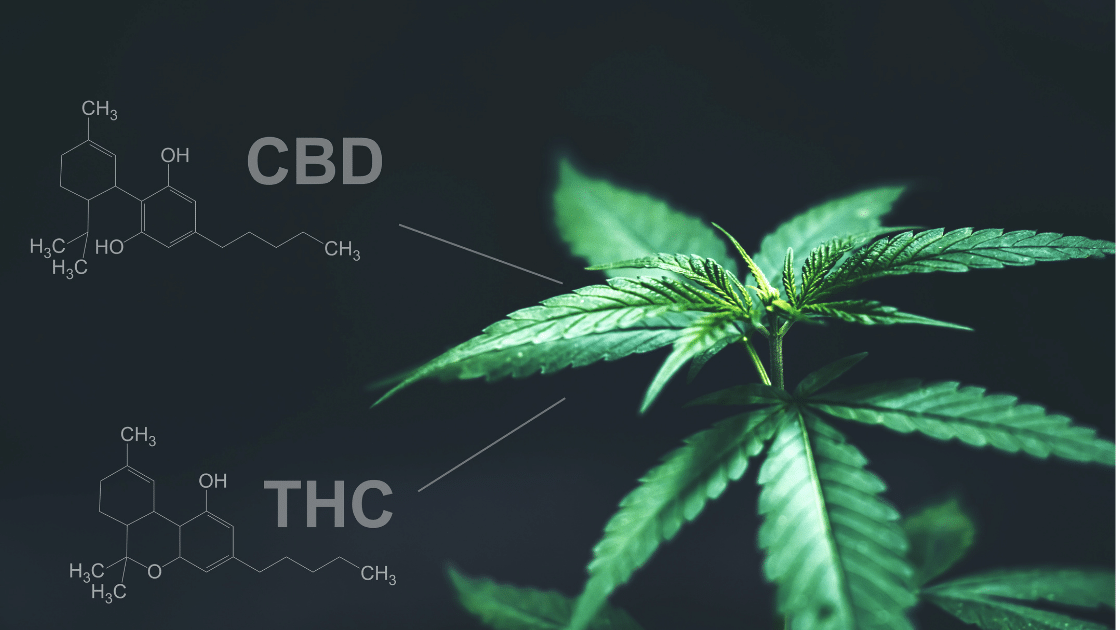In recent years, CBD has become a hot topic due to its versatile wellness benefits, and its popularity has only increased after the passing of the 2018 Farm Bill that made hemp and CBD products legal to buy and consume on a federal level across US states.
But why is everyone talking about this cannabinoid? What effects does it produce on consumers and does it produce any side effects? What does science say about consuming CBD? And what CBD products can you find on the market? We’ll answer these questions and more, so let’s begin.
What is CBD?
CBD, or cannabidiol, is one of the two main cannabinoids found in the cannabis plant, along with tetrahydrocannabinol (THC). This non-intoxicating cannabinoid doesn’t produce any mind-altering effect on consumers but is rather known for the therapeutic effects it may produce.
CBD is found in a variety of cannabis plants but in different amounts. Generally, cannabis indica plants contain smaller amounts of CBD compared to cannabis sativa and cannabis ruderalis.
CBD is found in both hemp and marijuana which are botanical classes of the cannabis sativa plants that are similar but not the same. The difference between hemp and marijuana is their specific cannabinoid content and how they’re used. Marijuana has a higher THC content and is used for recreational and medicinal purposes, while hemp is specifically used and grown for medicinal and industrial use due to its lower THC and higher CBD content. Hemp, and for that matter all legal hemp products, need to contain less than 0.3% THC in order for them to qualify as hemp.
As the research on CBD increases and more and more studies show its potential beneficial properties for treating or alleviating the symptoms of a number of medical conditions, CBD will only continue to grow in popularity.
How Does CBD Affect the Body?
The reason why CBD affects the body in the first place is our endocannabinoid system (ECS), which is a cell-signaling system that’s responsible for maintaining balance (homeostasis) in the body through regulating functions such as appetite, mood, pain, sleep, inflammation, and others.
When the body is imbalanced, it produces its own internal cannabinoids to restore homeostasis. These endocannabinoids attach to the receptors around the body and help it regulate itself, hence homeostasis is restored. Similar to how the endocannabinoids affect the body, so do cannabinoids like CBD.
Due to the similar structure to the endocannabinoids that are naturally found in the body, CBD, THC, and the other cannabinoids found in the cannabis plant affect the body in a very similar way. THC mainly binds to the CB1 receptors, while CBD “has little binding affinity for either CB1 or CB2 receptors, but rather behaves as a non-competitive negative allosteric modulator of CB1 receptors, and it reduces the efficacy and potency of THC”.
Moreover, THC provides intoxicating effects on users, while CBD doesn’t. In fact, CBD may provide calming effects which is why it has been researched in a lot of medical studies.
So, what are the effects that consumers may expect to feel after consuming CBD?
The Effects of CBD on Consumers
As we’ve mentioned above, CBD doesn’t produce any intoxicating effects on consumers, but rather produces mild relief and a calmer, more balanced mood. Depending on the type of cannabis product that you consume and the consumption methods, the onset of effects can take anywhere between 15 minutes to 1.5 hours, and the effects wear off after 5-6 hours at most.
A plethora of medical studies have researched the benefits of CBD and how it may aid the body in dealing with symptoms of numerous medical conditions, and we’ll mention some of those below.
- Anxiety (a 2015 study concluded that CBD might have the potential to help with a number of anxiety related issues)
- Insomnia (a 2019 study found that the use of CBD helped improve the sleep of participants within the first month of use in 48 out of 72 patients)
- Pain (a 2020 study showed that CBD might be useful in helping pain due to its analgesic effects)
- Potential neuroprotective properties (according to a review of studies, CBD may help with symptoms of neurodegenerative issues)
Are There Any Side Effects to Using CBD?
CBD is generally considered safe to use for most people, and some even give CBD to their pets since the use of CBD rarely causes side effects. However, this is largely dependent on the serving size, as well as how sensitive people are to CBD. Keep in mind that you should avoid using CBD if you’re taking blood thinners.
It’s also important to mention that CBD may also interact with other medications, which is why it’s always best to discuss CBD consumption with your healthcare provider. With all that in mind, people who have a lower tolerance to CBD or people who have consumed extremely large doses of CBD may experience side effects, such as fatigue, drowsiness, dry mouth, diarrhea, and reduced appetite.
Тypes of CBD Products
CBD can be found in a variety of products that fit each consumer’s needs. But before we dive into the various products, let’s see what types of CBD you can find in those products.
Types of Cannabidiol in CBD Products
In each CBD product, you’ll find one of the following types of CBD:
- CBD isolate (which is pure CBD since all the other cannabinoids and terpenes are removed)
- Broad-spectrum CBD (CBD + all the other cannabinoids and terpenes that are naturally found in the hemp plant, apart from THC)
- Full-spectrum CBD (CBD + THC (below 0.3%) + all the other cannabinoids and terpenes that are naturally found in the hemp plant)
CBD Products
Now that you’re familiar with the types of CBD you can find in different products, we’ll give you an overview of the different products you can find readily available on the CBD market.
CBD Oil Tinctures
CBD oil is probably one of the most popular CBD products that’s made using CBD hemp extract and carrier oil. The hemp extract or hemp flower is infused into the carrier oil which can be olive oil, coconut oil, or MCT oil. The presence of the oil helps to make the product more bioavailable, meaning the body can absorb it more easily. The absorption in the bloodstream is either through the digestive tract (if swallowed) or through the sublingual glands (if added under the tongue).
Hemp Flower
Hemp flower comes directly from the hemp plant, specifically female hemp plants. Once the plant passes the flowering stage, the buds are ripe for harvesting, and ready to be dried and smoked. If you’re searching for some new strains to try, take a look at the hemp flower we offer!
CBD Edibles and Drinkables
CBD can be infused in foods and drinks, such as brownies, cake, gummies, lollipops, coffee, and tea, but also in savory dishes and dips. When consuming these types of products, the CBD enters the bloodstream through the digestive tract. Keep an eye out for ingredients on these product types, however, as many are full of sugar, dyes and other things not ideal for healthy eating.
CBD Capsules
Another form of edible CBD product that has been gaining a lot of popularity recently is capsules infused with CBD. These products are excellent for consumers who either aren’t fans of cannabis edibles or don’t enjoy the taste of CBD oil. They offer a discreet way of consuming CBD which is especially beneficial for medical marijuana patients who need to consume specific serving sizes of CBD at specific hours of the day. When consuming CBD capsules, CBD is absorbed into the bloodstream through the digestive tract.
CBD Creams, Lotions & Topicals
One of the most popular CBD products for localized soreness is CBD topical products. They’re one of the easiest ways to use CBD and produce localized effects on the place where the product is applied. When using these products, CBD is absorbed transdermally. You can find these types of products in the form of topical CBD rollers, salves, creams, and lotions, but also in skincare products such as body oils, face creams, hand creams, and under-eye creams, and others.
Bioavailability of CBD Products
Now that you’re familiar with the different CBD products, let’s quickly take a look at different CBD consumption methods as well as their bioavailability, onset of effects, and duration of effects.
- Sublingual consumption (tinctures): 34% – 46% bioavailability; Onset of effects: about 15 to 20 minutes; Duration of effects: 4 to 6 hours;
- Transdermal consumption (topicals): 45% bioavailability; Onset of effects: 5-10 minutes; Duration of effects: 4 to 6 hours;
- Oral consumption (edibles): 6% – 15% bioavailability; Onset of effects: 45 minutes to 2 hours; Duration of effects: 6 to 12 hours.
[See here for more helpful information related to How Long it Takes CBD to Work]
CBD Serving Sizes and Using CBD Products
When it comes to determining the serving size of CBD products, the most accurate answer is that this depends on each person and their tolerance levels, and the reason why they’re taking CBD. For this reason, it’s best to consult a healthcare practitioner who is knowledgeable about CBD. Apart from that, you can always check the recommended serving sizes which are generally found on the label of the product as a good starting point. And remember, it’s always best to start with a low dose and gradually increase it until you find the perfect serving size.
[See our helpful guide on CBD Serving Sizes here]
Choosing a Quality CBD Product
Finally, when consuming CBD, it's essential that you choose a product of high quality if you want to take advantage of its potential benefits. To determine whether a product is of high quality, you should pay attention to whether the company you’re purchasing the product from uses third-party lab testing.
Generally, before a product is licensed and can be sold, it needs to be batch tested to confirm its quality and double-check whether it complies with federal regulations. After the testing, the company will include the Certificate of Analysis (COA) on its website where potential customers can check the quality of the products. The COA can also be included as a QR code on the product which can be scanned with a phone camera.
[See here for a helpful Guide on How to Read a CBD COA]
Organic Hemp
For hemp to be certified as organic hemp, it needs to be grown without pesticides and needs to be separated from non-organic hemp after harvesting. Growers need to focus on having good quality soil that hasn’t been treated with additives. For more information about the specific conditions required for growing organic hemp, you can visit the U.S Department of Agriculture.
Final Thoughts
We hope that after reading this article, you have the basic knowledge about what CBD is, how it’s used in different products, and the potential benefits of using it. Remember that the research on CBD is ongoing and we have so much more to learn, so keep reading our articles to keep up with the newest information on CBD and its many uses.




Leave a comment
This site is protected by hCaptcha and the hCaptcha Privacy Policy and Terms of Service apply.